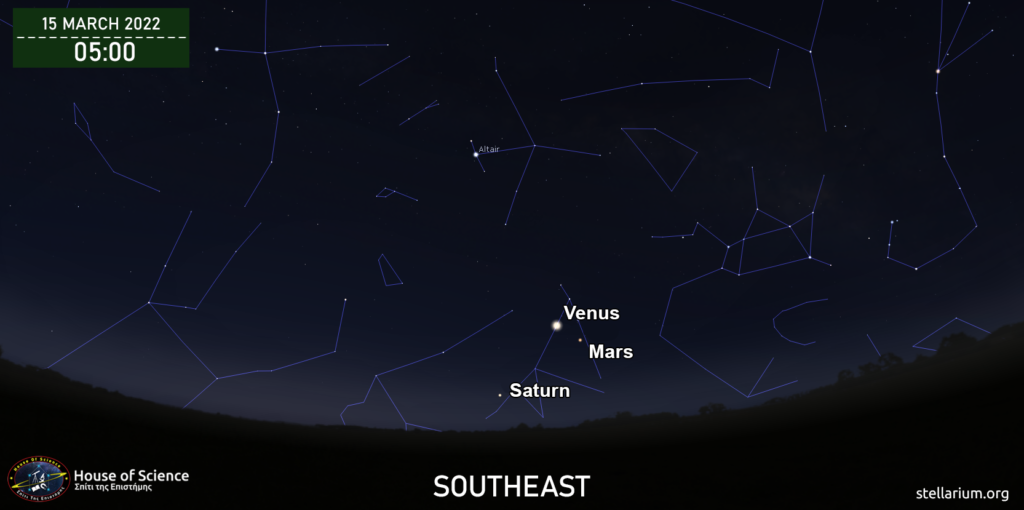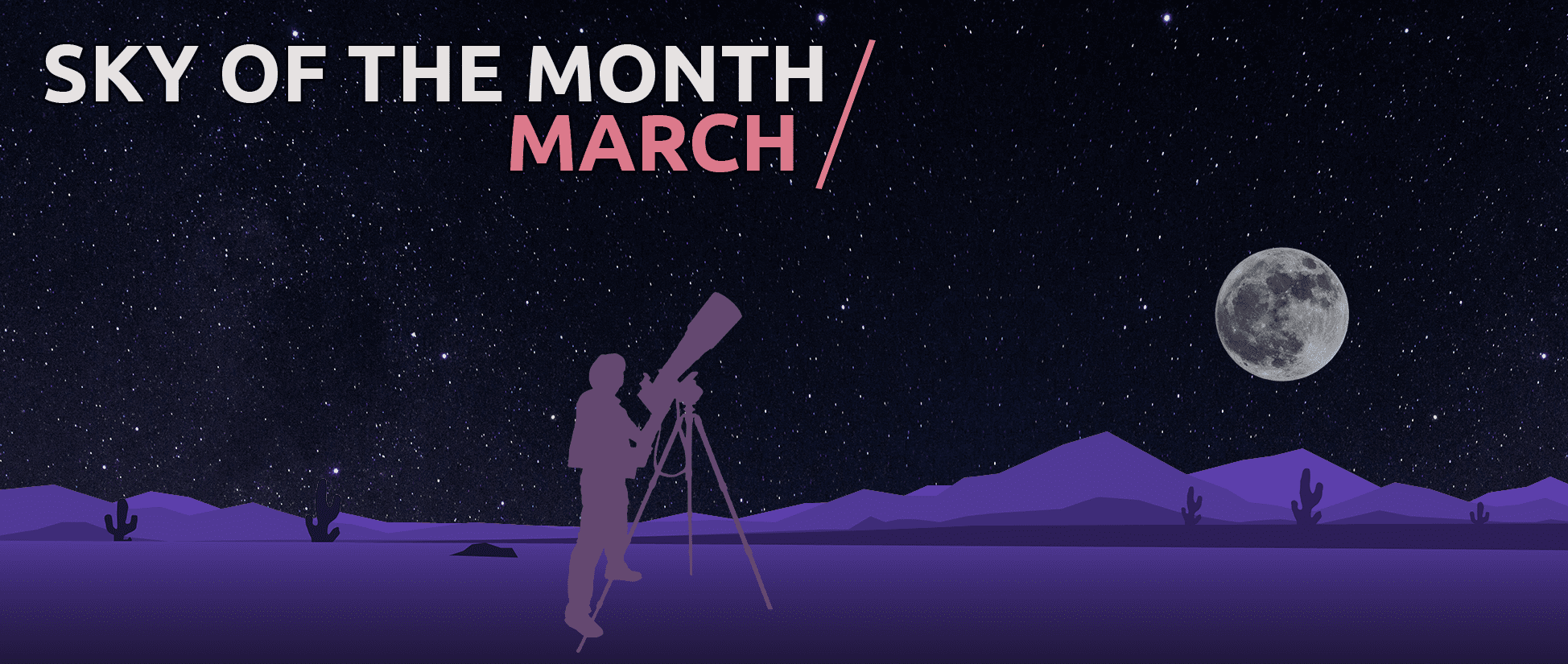
March is the month of the Equinox, the day when the Sun illuminates the Earth exactly perpendicular to its equator, making the length of the day equal to the length of the night. So let’s see exactly what the night sky has in store for us in March.
Fun fact: March 20th marks the astronomical beginning of spring in the northern hemisphere.
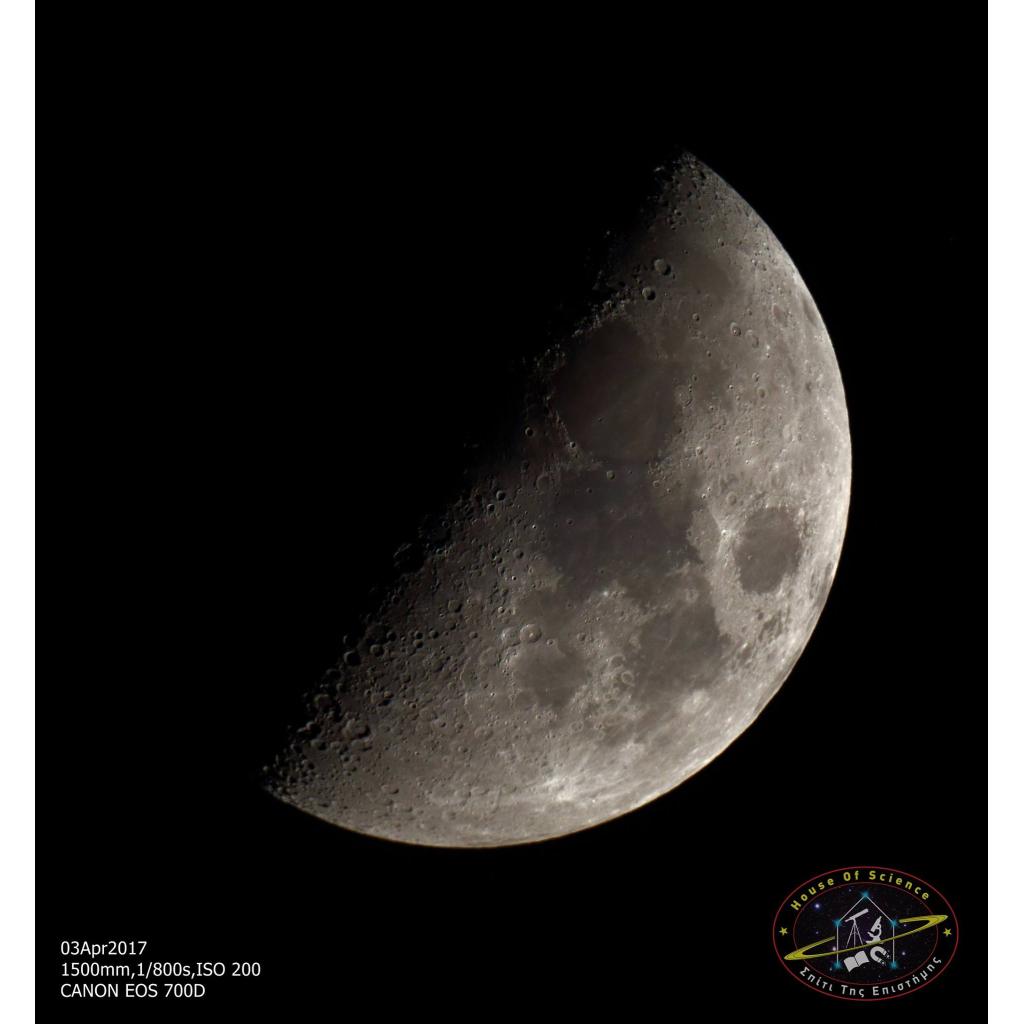
Photograph 1: Moons First Quarter
The Magic of the Moon – Full Moon 18/3/2022
On March 10 our moon will be in the first quarter, i.e. half lit by our sun (Photo 1). We will observe it at sunset in the constellation of Taurus (Figure 1). As the days pass, the moon will appear brighter and brighter in the sky, reaching its maximum, where we will have a full moon on March 18.
Fun fact: When the moon is not in its full moon phase, it allows us to focus even better on the craters.
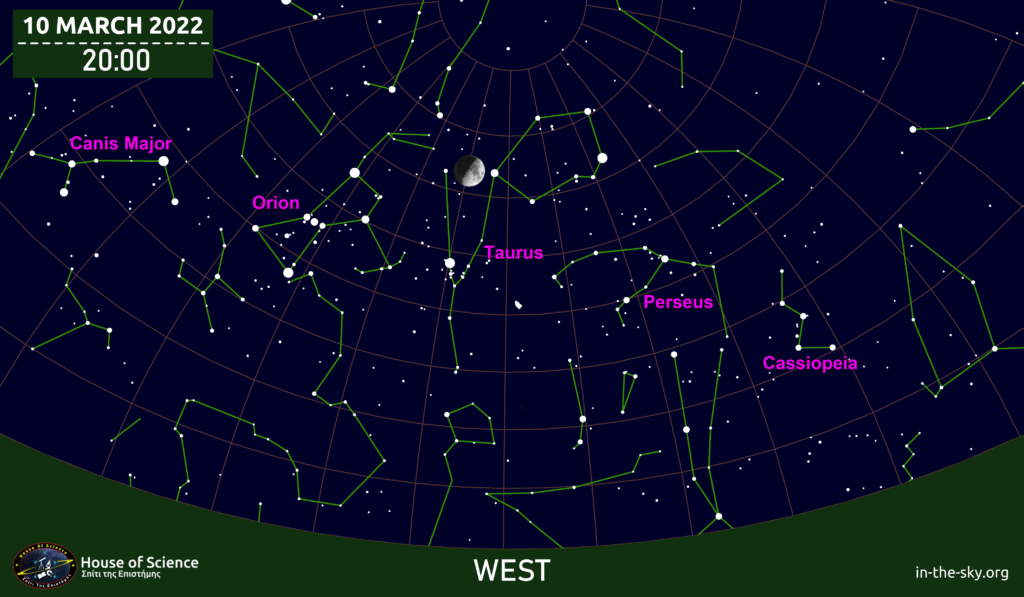
Constellations and main stars
The classic winter constellations, such as Taurus and Orion, are increasingly fading earlier and earlier in the southwestern sky. Instead, new and bright constellations are starting to make their appearance such as Leo, Virgo and Boötes.
Fun fact: The Earth’s rotation around its axis in relation to the stars takes 23 hours and 56 minutes. This is the reason for the alternation of the constellations in the sky.
We bid farewell to the Orion Constellation
March gives us the opportunity to observe the imposing constellation of winter for a while longer. We can observe the constellation in the southwest, with sunset until 22:00.
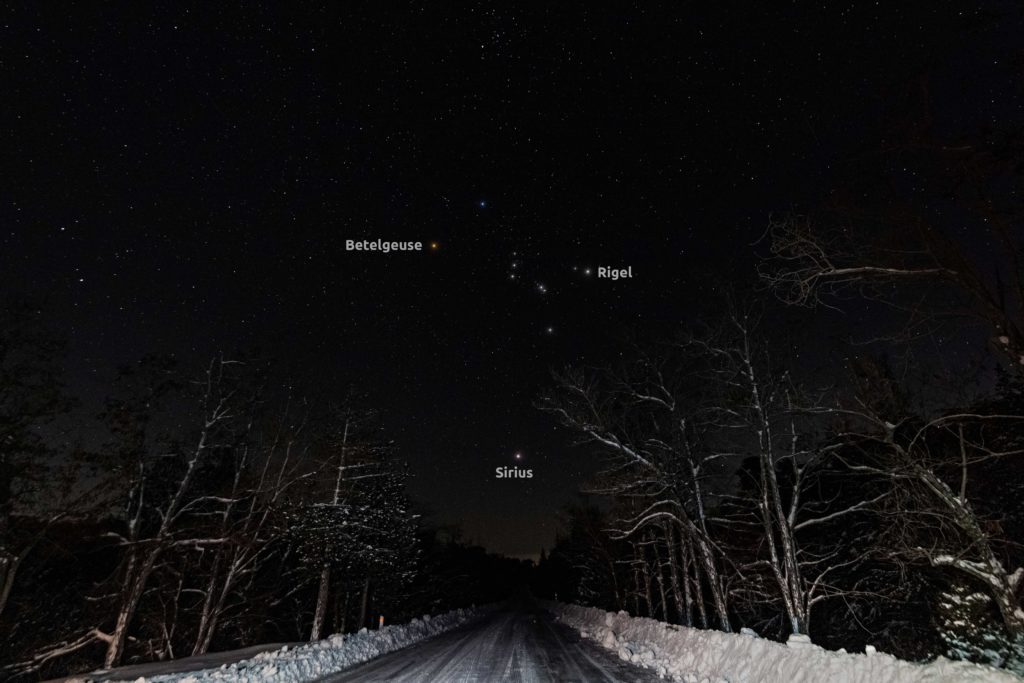
Photograph 2: The imposing constellation of Orion with the characteristic stars Betelgeuse and Rigel. The photo was taken from the snowy Troodos.
The “King” Leo and the Royal Star (Regulus)
We welcome Leo to the sky. The shape of the constellation is very lion-like, so the identification process becomes very easy. We can then focus on the brightest star in the constellation. The star is named Regulus and we will be able to locate it easily on 15 March just below the moon (Figure 2).
Fun fact: The Leo Triplet is a constellation of galaxies that impresses any amateur astronomer. Observation requires a telescope with a diameter of at least 150 mm.
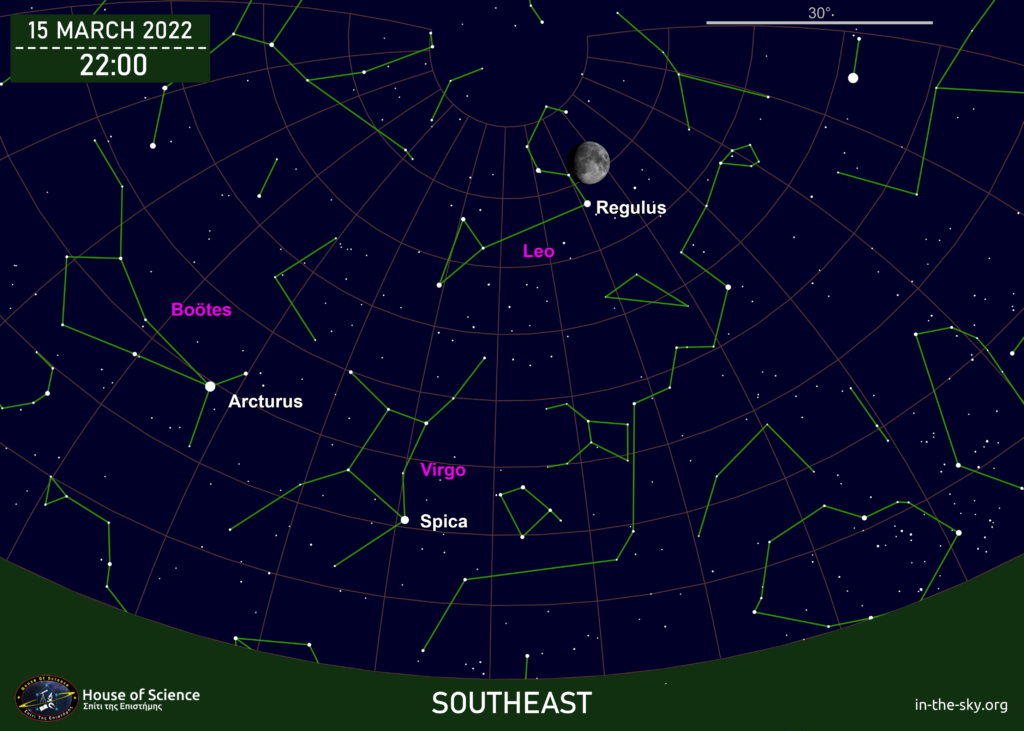
The constellation of Virgo with the bright star Spica
East of Leo you will find the constellation of Virgo. Although it is the largest zodiacal constellation in extent, we will have to work our imagination quite a bit for its schematic representation. The constellation depicts a female figure where in Greek mythology she was believed to be Persephone, daughter of the goddess Dimitra. The very bright star Spica will make it easier for us to locate the constellation.
The Planets
We will be impressed by the brightness of Venus if we spot it at dawn (Figure 3). Lower than Venus one can spot the planets Mars and Saturn.
